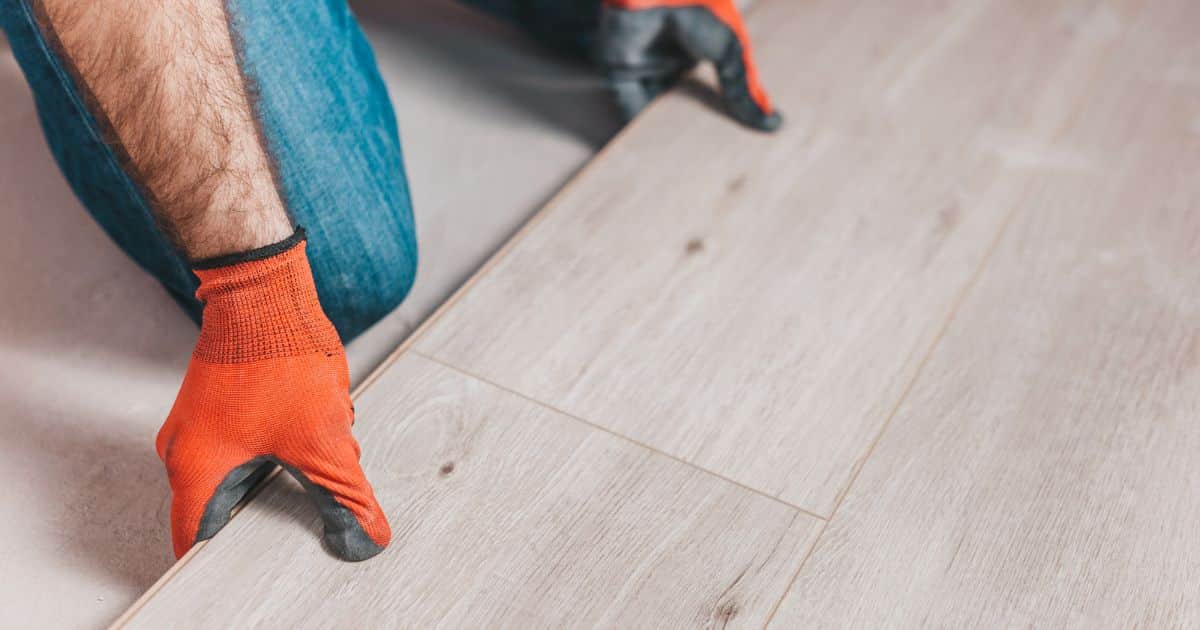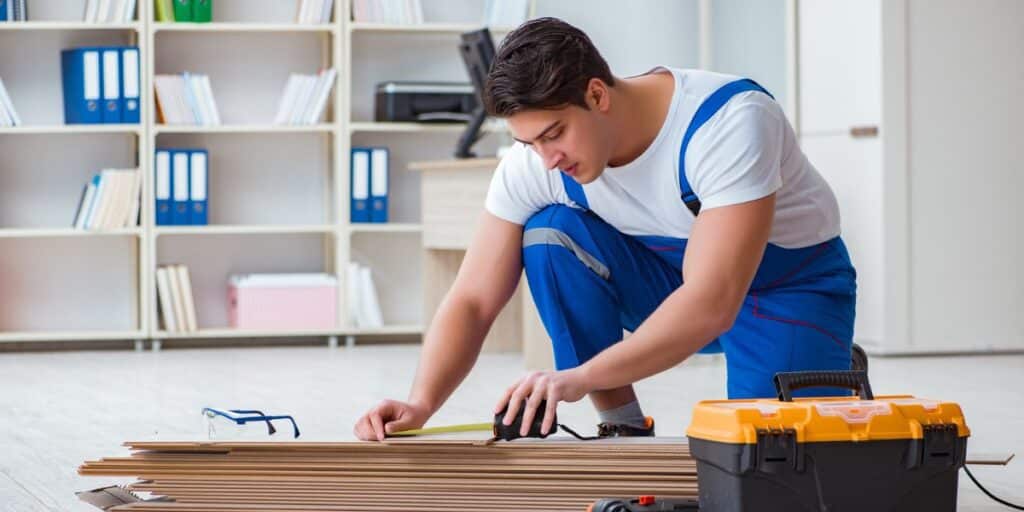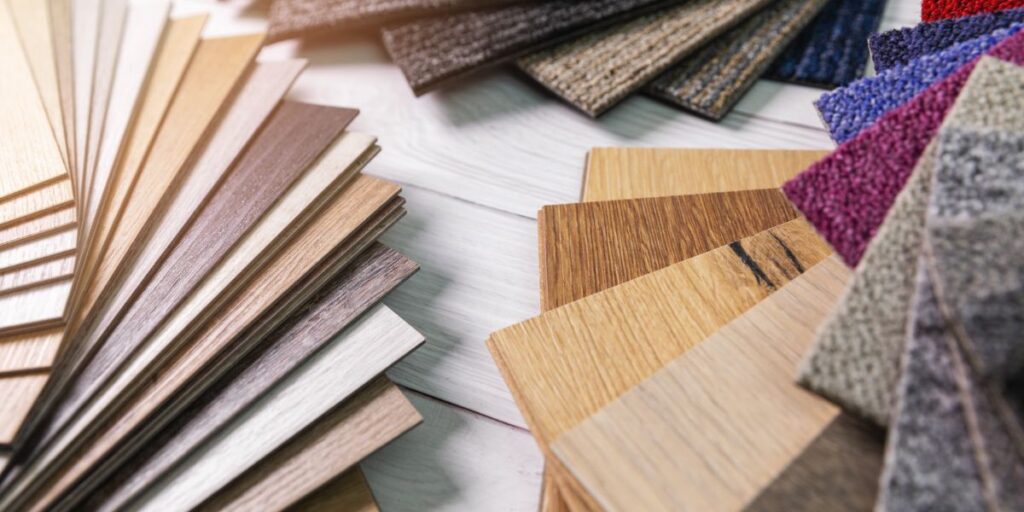
If you’re looking for a cost-effective and easy way to upgrade your flooring, vinyl plank flooring is a great option. It’s durable, waterproof, and available in various colors and styles. However, just like any other type of flooring, vinyl plank flooring must be installed correctly to ensure its longevity.
In this article, we will discuss the common mistakes when installing vinyl plank flooring. We’ll explore why proper installation is crucial and provide tips on how to avoid making these errors.
Explanation of Vinyl Plank Flooring
Before we dive into the importance of proper installation, let’s first understand what vinyl plank flooring is. Vinyl plank flooring is a type of synthetic floor that replicates the look of hardwood floors without the high cost and maintenance requirements. It comes in planks with interlocking edges that snap together during installation.
One of the benefits of vinyl plank flooring is that it’s waterproof and resistant to scratches and stains, making it an excellent choice for homes with children or pets. Thanks to its durability, it can last up to 20 years or more if installed correctly.
The Importance of Proper Installation
Proper installation is vital for several reasons. First off, if you don’t install your vinyl planks correctly, they won’t look their best aesthetically speaking.
Ill-fitting planks can ruin the appearance of your entire room. Additionally, improper installation can lead to warping or buckling over time as well as damage from water getting underneath them.
Moreover – this cannot be stressed enough – proper installation ensures safety when walking on the floor which affects overall comfortability in your home. Floppy sections or loose boards could cause accidents such as falls – especially for elderly individuals who are more prone to tripping.
RELATED: Waterproofing Laminate Flooring: The Ultimate Guide to Protect Your Floors
Common Mistakes When Installing Vinyl Plank Flooring
The aim of this article is to educate homeowners on the importance of proper vinyl plank flooring installation and provide tips to avoid common mistakes that can lead to expensive repairs or a complete replacement. We hope that by learning about these errors in advance, you’ll be able to install your vinyl plank flooring correctly and enjoy it for many years to come.
Skipping the Acclimation Process
One of the biggest mistakes people make when installing vinyl plank flooring is skipping the acclimation process. This is where you let the planks sit in the room they will be installed in for a certain amount of time before actually installing them. The purpose of this process is to allow the planks to adjust to the temperature and humidity levels in the room, which can affect their size and shape.
The consequences of skipping this step can be disastrous. If you install unacclimated planks, they may expand or contract after installation, causing buckling or gaps in your floor.
Not only does this look unsightly, but it can also lead to tripping hazards and even damage to your subfloor. To properly acclimate your planks, leave them in their boxes in the room where they will be installed for at least 48 hours before installation.
Make sure that the room temperature and humidity levels are consistent with what they will be during normal use. Trust me, taking this extra time to properly acclimate your planks will save you from major headaches down the line.
Failing to Prepare the Subfloor
Another common mistake when installing vinyl plank flooring is failing to prepare the subfloor properly. Your subfloor needs to be flat, dry, and clean before you lay down any new flooring. Neglecting this step can result in uneven floors that are prone to creaking and other noises.
The importance of subfloor preparation cannot be overstated. A poorly prepared subfloor can cause permanent damage to your new floor or even lead to structural issues with your home’s foundation over time.
Before laying any new flooring down on top of your subfloor, make sure it’s completely clean and free from debris or moisture that could compromise its integrity. Then check for any uneven areas using a spirit level or straight-edge tool.
If you find any high or low spots, you’ll need to level them out with a self-leveling compound or sand the subfloor. Trust me, taking the time to properly prepare your subfloor will ensure a smooth and long-lasting vinyl plank flooring installation.
Neglecting Expansion Gaps
Expansion gaps are critical to ensuring a successful vinyl plank flooring installation. These gaps allow for the natural expansion and contraction of the planks due to changes in temperature and humidity levels. Neglecting these gaps can cause your planks to buckle, warp, or even break apart over time.
To ensure proper expansion gaps, you need to measure and mark them out around the perimeter of your room before installing the floor. The gap should be at least 1/4 inch wide for every 10 feet in length or width of your room.
So if your room is 20 feet long by 10 feet wide, you’ll need at least a 1/2-inch gap around the entire perimeter. Once you’ve marked out the gaps, make sure to maintain them while installing each row of planks.
You can do this using spacers or other tools designed specifically for this purpose. Don’t neglect expansion gaps in your vinyl plank flooring installation—trust me, it’s not worth the risk of having to redo everything down the line because of avoidable mistakes!
RELATED: Which Direction to Lay Vinyl Plank Flooring: A Comprehensive Guide
Frequently Asked Questions
What are the problems with vinyl flooring installation?
Some common problems with vinyl flooring installation can include improper subfloor preparation, inadequate adhesive application, or poor seam sealing, which can lead to issues such as lifting, peeling, or gaps between the planks.
What are the problems with installing luxury vinyl plank flooring?
Problems with installing luxury vinyl plank flooring can include difficulties with accurate cutting and fitting, challenges in achieving a level subfloor, or issues related to the stability and integrity of the locking mechanisms, which can affect the overall installation quality.
What is the best installation method for vinyl plank flooring?
The best installation method for vinyl plank flooring depends on the specific product and manufacturer’s recommendations. However, popular methods include floating installation with click-lock or loose lay systems, adhesive installation, or a combination of both for enhanced stability and durability.
What can damage vinyl plank flooring?
Vinyl plank flooring can be damaged by sharp objects, excessive weight or pressure, dragging heavy furniture without protection, exposure to direct sunlight causing fading or discoloration, and prolonged exposure to moisture or water, which can lead to warping or mold growth.
Why is my vinyl plank flooring not laying flat during installation?
If vinyl plank flooring is not laying flat during installation, it could be due to insufficient acclimation to the room temperature, uneven subfloor, or improper installation techniques. Ensuring proper acclimation, addressing subfloor issues, and following correct installation procedures can help resolve this problem.
What is the truth about vinyl plank flooring?
Vinyl plank flooring has gained popularity due to its durability, water resistance, and ease of maintenance. However, it’s important to choose high-quality products from reputable manufacturers, follows proper installation guidelines, and be aware of the specific characteristics and limitations of vinyl plank flooring to make informed decisions for your space.
Conclusion
Summary of Common Mistakes: Installing vinyl plank flooring is a popular DIY project that can save you money. However, there are common mistakes that can result in a sloppy and unsatisfactory outcome.
Skipping the acclimation process, failing to prepare the subfloor, neglecting expansion gaps, installing without a plan, failing to cut properly, and disregarding manufacturer instructions are all common mistakes you should avoid. Reminder of Importance: Proper installation is critical for the longevity and aesthetics of your vinyl plank flooring.
Don’t be fooled by online tutorials that make it seem like an easy task. It requires careful planning, attention to detail, and proper tools to ensure success.
Cutting corners will only lead to headaches down the road. Encouragement to Seek Professional Help: If you’re feeling overwhelmed or unsure about any aspect of the installation process, don’t be afraid to seek professional help.
Hiring a qualified installer may seem like an extra expense, but it’s worth it in the long run. A professional can help you avoid costly mistakes and ensure your flooring looks great for years to come.
Installing vinyl plank flooring is a great way to update your home’s interior. However, proper installation is key for achieving long-lasting results that look amazing.
Remembering to acclimate planks properly before installation day arrives will prevent unwanted buckling down the road; preparing your subfloor well ensures evenness throughout the floor; including expansion, and gaps allows room for movement due to temperature changes; planning ahead makes everything go smoother on installation day; precise cutting gives everything a clean appearance; and following manufacturer instructions helps prevent any unforeseen issues with warranties or future damage claims. Don’t forget how important it is to seek out professional assistance if things get too overwhelming or confusing – they’ll give expert advice every step along the way!






